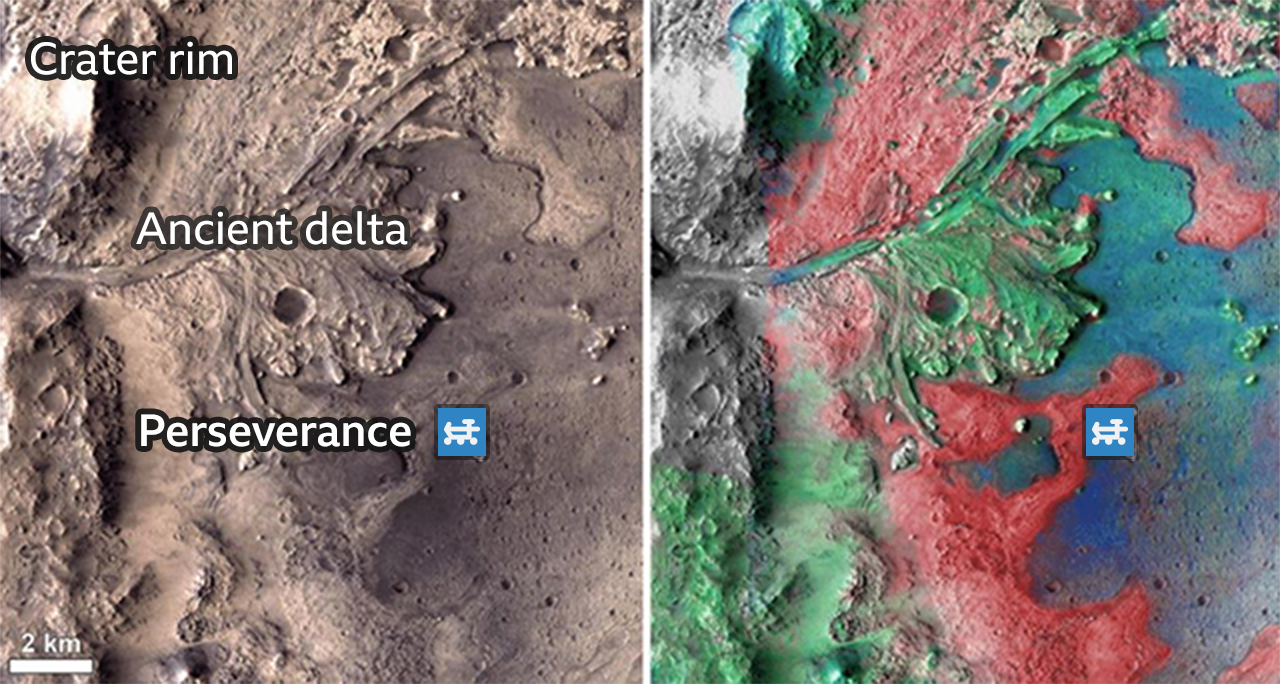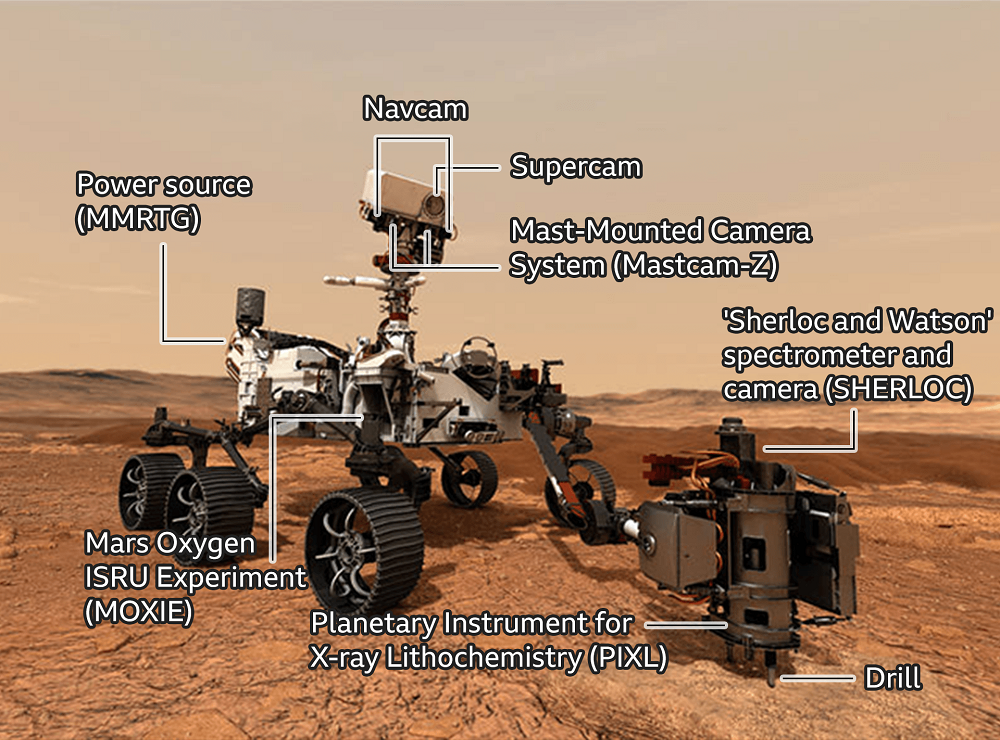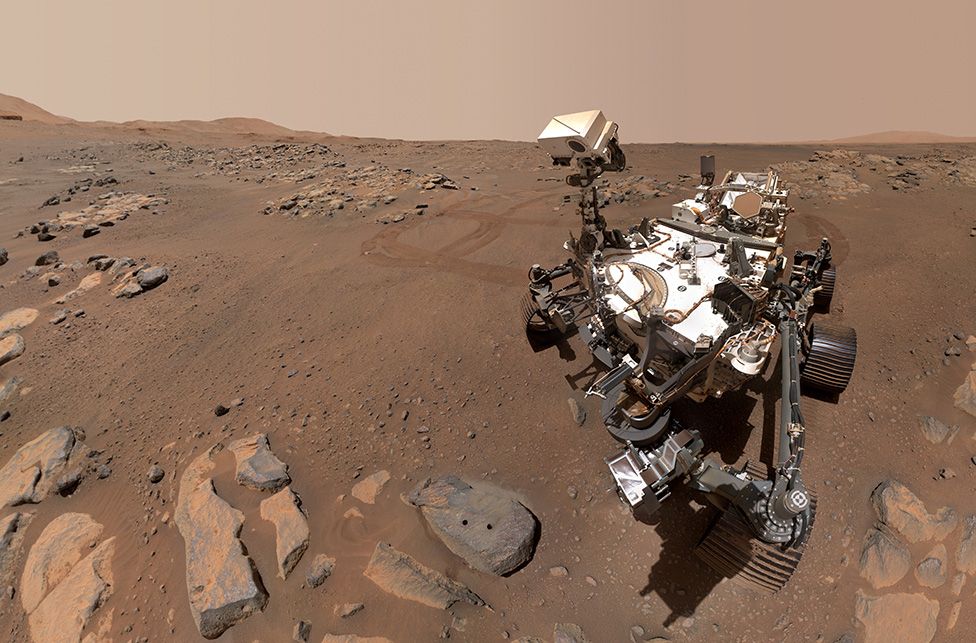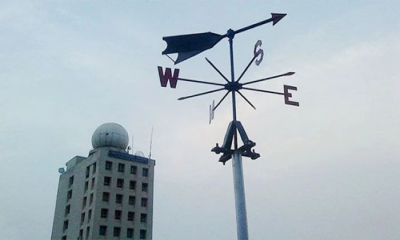Nasa's Mars rover Perseverance has identified what are probably the oldest rocks at its crater landing site.
They are volcanic in origin, perhaps the product of some ancient lava flow.
It's an important milestone for the mission because it means that when samples of these rocks are returned to Earth next decade, they can be dated.

This will tighten our understanding of the history of not only the touch-down location but of Mars generally and the wider Solar System beyond.
Science team-member Briony Horgan, from Purdue University, said the identification represented a "really, really big deal".
Perseverance dropped into Jezero Crater in February.
This deep depression had been chosen as the destination because it appeared in satellite images to contain a delta - a structure built up from the silt and sand dumped by a river as it enters a wider body of water, such as a lake.

It's the kind of geological feature that just might record traces of past microbial life on Mars billions of years ago.
The rover didn't land on the delta itself but on the surrounding terrain - on the floor of the crater.
It's here that the robot has found its baseline rocks.

Perseverance was commanded to examine two broad areas: one dubbed the "Fractured Rough", the other nicknamed "Séítah" (meaning "amidst the sand" in the Navajo language).

























-(25)-20251122062715-20251204041734.jpeg)





-20251207131533.jpg)






